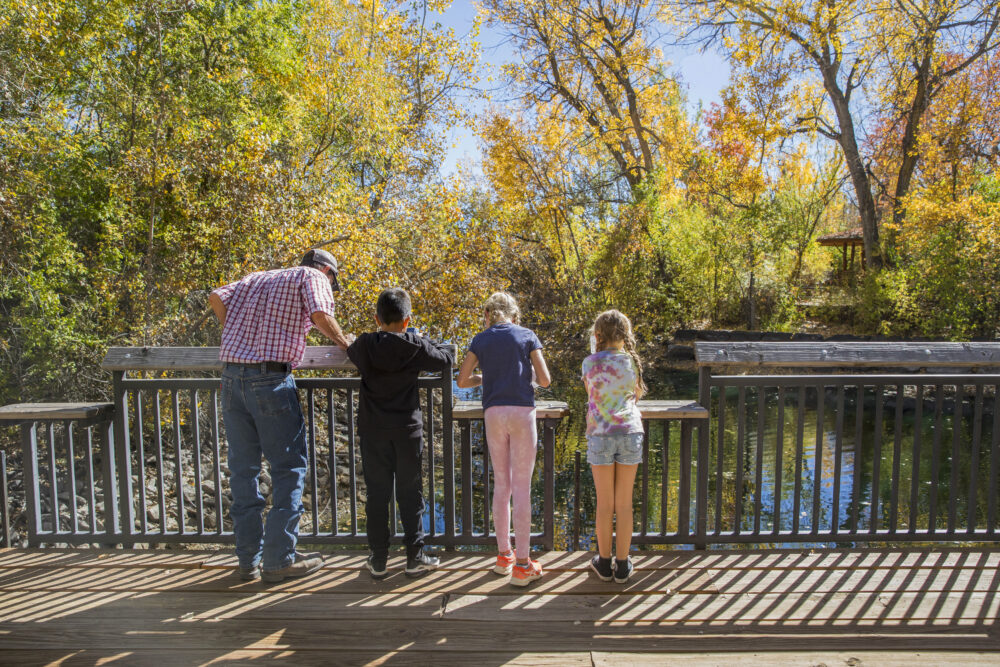We have much more to do and your continued support is needed now more than ever.
How Will Climate Change Affect The Future of Baseball?

Baseball is America’s oldest pastime. But as climate change takes a greater toll on wildlife all across America, the changes it will bring may have a lasting effect on the game — from hotter games, to more rainfall, the wood that can be used for bats, and even how easy it is to hit home runs! There’s a lot that may be different about the future of baseball.
Fact SheetIncreasing Weather Extremes from Climate Change
Rain. Baseball’s mortal enemy. Thanks to climate change, extreme weather conditions are becoming the new normal. This season, the Weather Channel reported that rain and other extremes like ice/snow/cold had postponed 28 games by the end of April — breaking the Major League Baseball (MLB) record for most “weather-related postponements” since they started keeping track in 1986. (The Associated Press reported that the previous record was 26 games.)
These climate trends and shifting rainfall patterns are going to continue to affect baseball around the country. Only seven of the 30 Major League Baseball stadiums have roofs, so most teams are

very vulnerable to weather-related issues. The remaining 23 MLB teams have 20 major cities that they call home (some cities have more than one team). The Weather Channel’s Climate Disruption Index looked at six factors to determine the top 25 U.S. cities most vulnerable to climate change: sea-level rise, extreme precipitation, extreme drought, urban heat islands, and changes in precipitation and temperature. Of the 20 cities hosting roofless MLB teams, over half of them were among the 25 cities the Climate Disruption Index lists as most at-risk from climate change.
But these changes will not affect every part of the country in the same way. FiveThirtyEight recently reported that areas like the Midwest have been getting drenched with rain by more frequent and more severe storms, while more recent climate models are projecting increasing likelihoods for droughts in other areas of the country.
If these trends continue, baseball teams around the country may have to find a way around either too little or too much rain. This is in addition to the higher temperatures all season long that both fans and players will have to endure. Once baseball literally becomes the hottest sport in America due to climate change, both the fans and players will have to find ways to adapt.
Humidity and Home Runs
Watching someone hit a huge home run is one of the biggest thrills in baseball. But did you know that humidity can play a big role in how easily the ball can fly through the air? When air is more humid, it means that there are more water molecules in the air. According to Popular Science, that water displaces heavier gases like nitrogen and oxygen — decreasing the air density and making it easier to hit balls further. Another factor is that the yarn in baseballs can actually absorb some of the water molecules in the air. Heavier baseballs fly further as well.

This may seem like a minor issue, but Major League teams are concerned enough that they’ve started storing their baseballs in humidors to prevent this problem. Sports Illustrated reported that the Colorado Rockies have stored their balls in a humidor since 2002, with the Arizona Diamondbacks following their lead for the 2018 season. Popular Science noted that, while Denver had an average Earned Run Average (runs scored against a pitcher) over two runs higher than other MLB stadiums from 1995-2001, once they started using their humidor, the average ERA dropped by about a run. SI also reports that Major League Baseball has mandated that all teams for 2018 store their balls in “an air conditioned and enclosed room” that has a sensor so MLB can determine whether or not every team should be forced to have a humidor for the upcoming 2019 season.
Everyone loves to see home runs, but climate change will mean that humidity changes will affect teams differently depending on their stadiums’ altitude and geography. As climate change makes some stadiums more humid while others become less, MLB will need to work to make the playing field as level as possible for hitters and pitchers alike.
Ash Trees and an Invasive Beetle
Ash is one of the most popular materials for baseball bats. Ash wood has a little bit more give than a harder wood like maple which means that baseballs spring off the bat when hit, not unlike a trampoline. Maple bats are harder, with a denser grain so they don’t flex as much as ash bats, but this extra flexibility gives ash bats a larger “sweet spot” than maple bats — making it a popular choice for baseball players.
Unfortunately, the number of ash trees has been decimated due to an invasive beetle with a shiny, green shell called the Emerald ash borer.

The beetle lays eggs in ash trees and then its larvae burrow into the tree and eat away at the bark, disrupting the trees’ nutrient systems and eventually killing them. Originally from northeastern Asia, the invasive beetle was first discovered near Detroit, Michigan in 2002. Since then, it has been discovered in 30 states and has killed hundreds of millions of ash trees and caused millions of dollars in damages.
With fewer cold days to reduce their populations each year, the beetles are expanding their range in parts of North America. Efforts are underway to contain the beetle, but this has been difficult because their eggs can lay dormant and the trees frequently display no external symptoms. This means that infected ash wood is often transported to new territories by hapless hikers and campers in bundles of firewood. More research and studies are underway to develop new methods to contain the Emerald ash borer, but unless we can get this invasive beetle under control, ash bats may be a thing of the past.
Fact Sheet Take Action





















